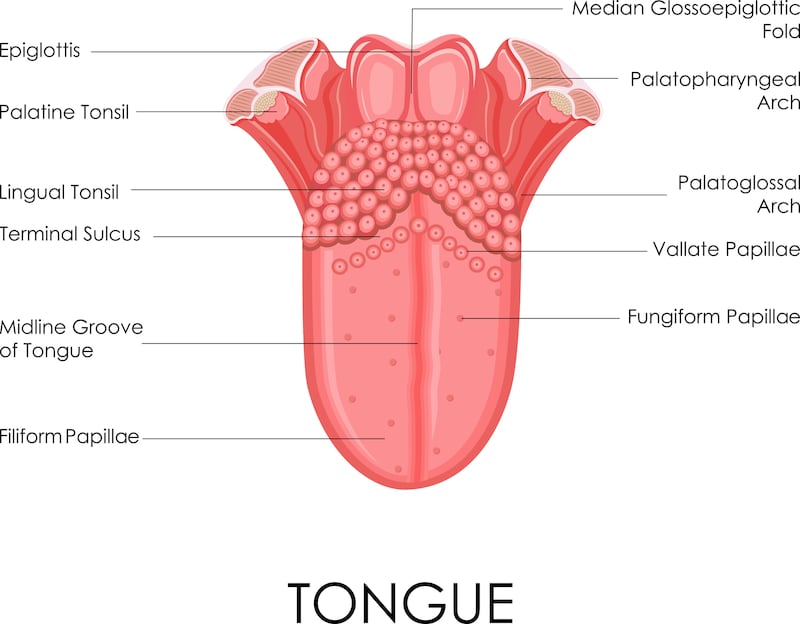“The eyes are the window of the soul” is a metaphorical saying that suggests that a person’s emotions can be revealed or reflected through their eyes. And it is a reminder that, in medicine, parts of the body can offer us clues as to possible disorders elsewhere in the system.
Take the tongue, for example. A recent article in the Conversation described how its appearance can share important information about our general health. A bright red, inflamed and swollen tongue is sometimes referred to as a strawberry tongue. The papillae become inflamed to look like pips on the surface, and it can begin with a white coating, making it look like a slightly unripe strawberry. Strawberry tongue could be a sign of scarlet fever. The bacterial infection is highly contagious but treatable with antibiotics. Without treatment, however, scarlet fever can lead to complications such as rheumatic fever. Strawberry tongue can also indicate Kawasaki disease, a potentially serious inflammatory disorder of childhood.

Conditions such as thrush (Candida albicans) can cause a white tongue, whereas lingua villosa nigra is the name given to a black hairy tongue. It comes from the elongation of the smallest papillae so they look like hairs. It’s associated with smoking and poor oral hygiene.
A blue tongue is a sign of central cyanosis. The bluish or cyan discolouration of the tongue and lips is a sign that the blood is poorly oxygenated. It occurs in numerous conditions of the heart and the lungs.
I feel we’re close now, Meghan, so I can speak freely. The right pitch is crucial in lifestyle hucksterism like yours
As Fergus Finlay and Tom Clonan’s spat escalates, Sarah McInerney relishes the radio gold
No, the Irish who come to Australia are not the ‘worst’
An Irishman in Spain: ‘Salaries are much lower here, but my mental health is far better’
There are a couple of “medical myths” associated with the tongue: one is that different parts of the tongue are sensitive to particular tastes (sweet at the tip, bitter at the back, for example). In fact, all parts of the tongue have a range of taste buds. The other concerns geographic tongue, which can have a dramatic appearance. This occurs where the top of the tongue turns from roughened papillae into patches of smooth red tissue. As a result, the tongue looks like a world map. In fact, geographic tongue is entirely benign and is relatively common – it’s estimated to affect 1-3 per cent of the population.
A decline in speed and smoothness of your walk can be an early indicator of neurodegenerative conditions, such as Parkinson’s disease
Meanwhile, also writing in the Conversation recently, Adam Taylor, professor of clinical anatomy at Lancaster University, highlights how our gait can also reveal clues as to the state of our health. Studies have shown that your walking speed at age 45 is a strong predictor of your physical and mental health later in life. And there is a noticeable decline in walking speed by the time you pass 60.
In terms of specific disease, a decline in speed and smoothness of your walk can be an early indicator of neurodegenerative conditions, such as Parkinson’s disease. Parkinson’s reduces the effectiveness of the brain’s messages to the musculoskeletal system, causing the person’s gait to be slower, less symmetrical and more “stop-start”. This can be subtle yet detectable during the early stages of the disease, Taylor notes.
If you feel pain in your thighs and down the back of your leg, and into your calf, while walking, and it disappears when you stop moving, this suggests the possibility of having peripheral arterial disease. The presence and then absence of the pain relative to moving or resting is called claudication. This happens because there is a narrowing of the arteries supplying blood to your legs. When you walk, there is an increased demand for oxygen from the muscles in the legs. As a result of the narrowing, the arterial blood flowing into the legs cannot meet the oxygen demand and the muscles release lactic acid, which causes the feeling of cramp. But when you stop moving, the muscles need less oxygen, so the pain disappears.
A staggering gait with balance problems can be a sign of a lack of vitamin B12, as can an infection of the inner ear.















